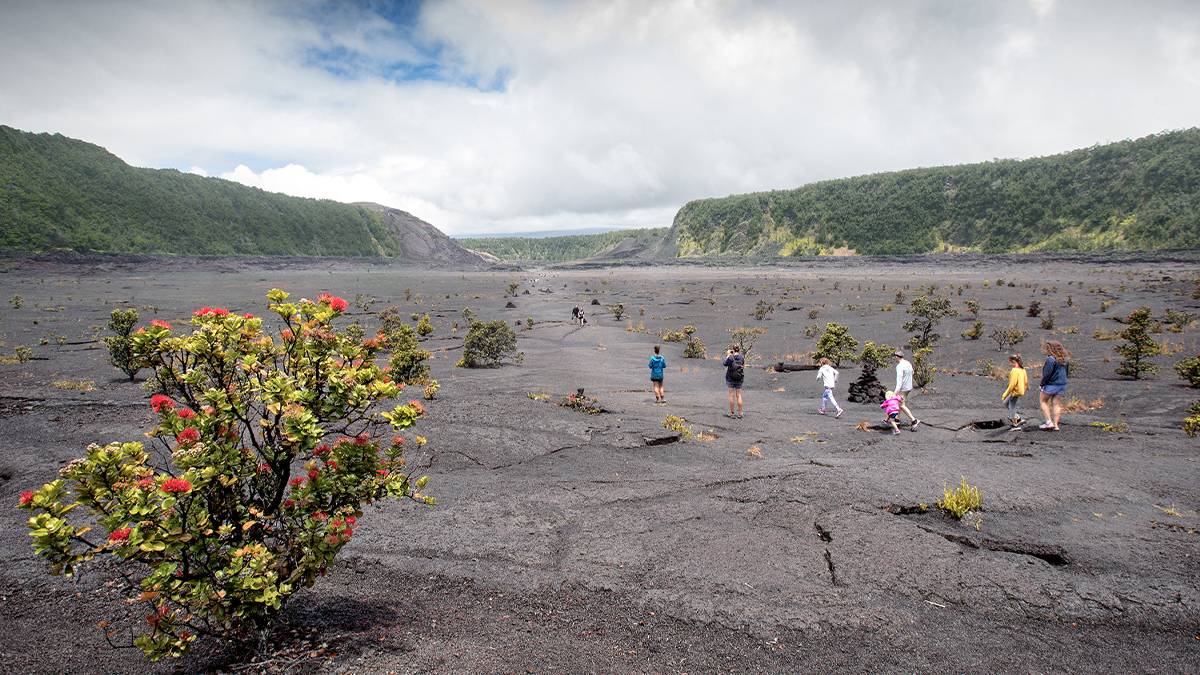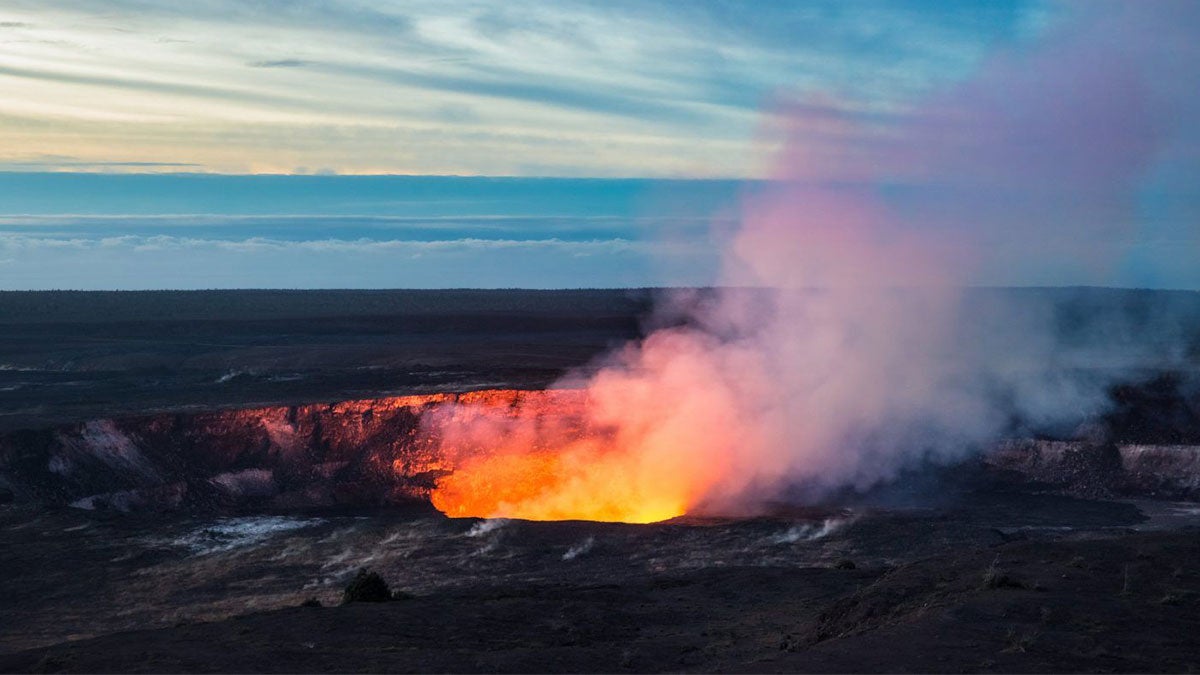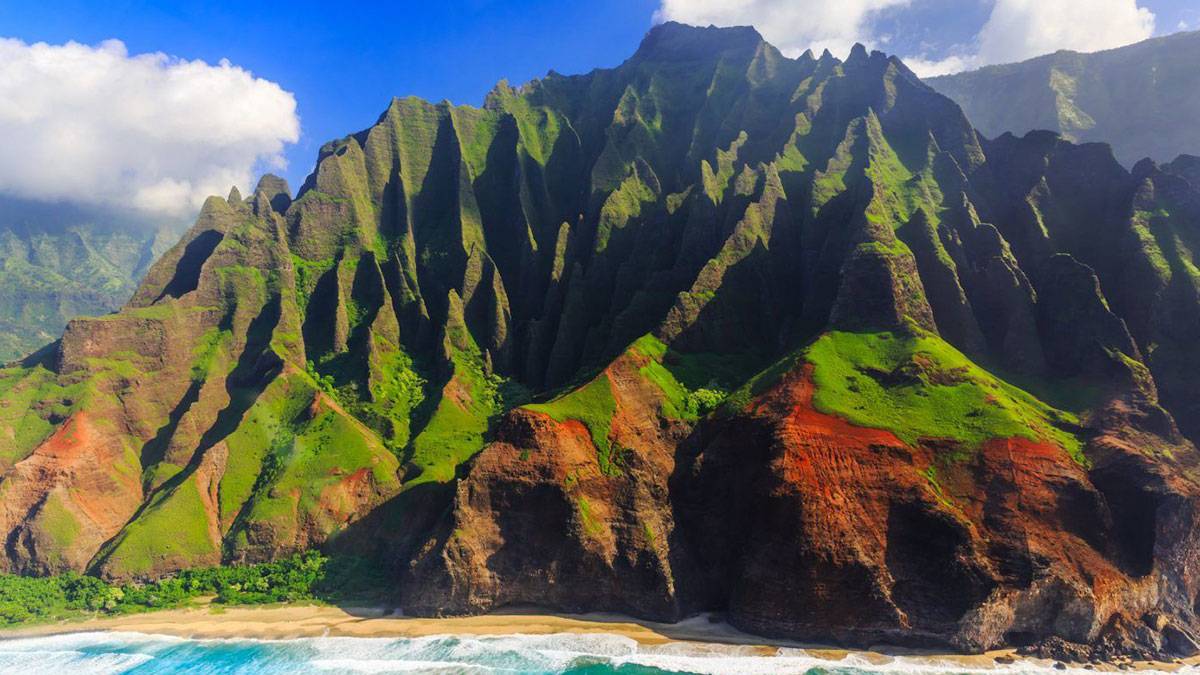Best Hikes Big Island: Discover the Big Island’s Untamed Beauty on These Epic Hikes
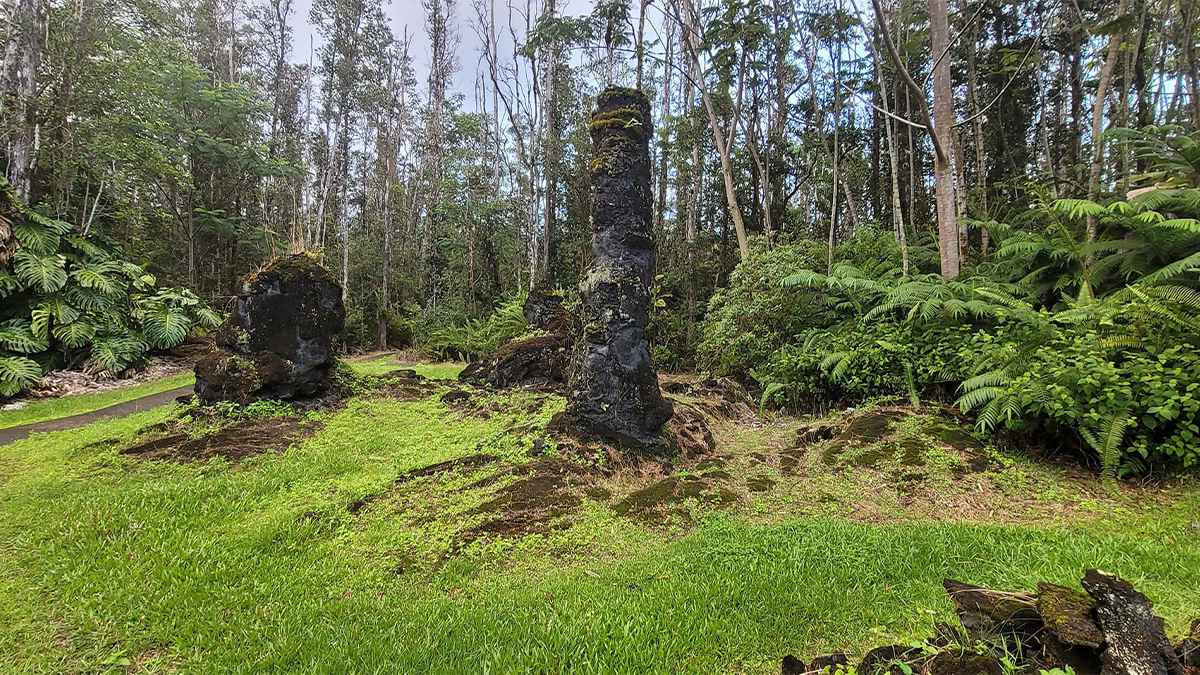
With its stunning landscapes and pristine nature, the Big Island offers some of the best hiking trails for explorers of all skill levels. From leisurely strolls to strenuous treks, find the perfect hike that suits your energy for a thrilling adventure around the island.
The Big Island is a hiker’s paradise. It offers a treasure trove of trails for every skill level, from beginner-friendly routes to challenging climbs that test your mettle and reward your effort with breathtaking views.
If delving into a world of sun-drenched black sand beaches, awe-inspiring lava flows, and towering volcanic peaks sounds tempting, then reading this comprehensive guide to the best hikes Big Island has to offer is an absolute must.
Whether you’re a novice hiker stepping onto the trail for the first time, or an experienced adventurer seeking your next thrill, Big Island has got you covered.
Find out how to select the most suitable trails for your skill level (from short hikes to insanely difficult trails), prepare for your ascent, and maximize your hiking experience on one of the most diverse and vibrant landscapes on earth.
[ez-toc]
Short and Sweet: Big Island Hikes for Beginners
Pu’uhonua o Honaunau National Historical Park Trail (Kona Coast)
Trail Head: State Hwy 160, Hōnaunau, HI 96726
Set out on an enchanting journey through time on the Pu’uhonua o Honaunau National Historical Park Trail, one of the most popular Kona hikes. Located along the sunny Kona Coast, this endearing trail offers a mild hike rich in Hawaiian culture and breathtaking views. It’s decidedly one of the best hikes in Kona.
Embarking on this historical hike, you’ll be walking mostly on a well-paved, flat trail, making it an optimal choice for beginners or families with children. The 1.8-mile roundtrip trail encompasses an ancient Hawaiian royal complex, offering one of the most informative big island hikes. Throughout the hike, you’ll encounter various interpretative signs that shed light on the area’s intriguing past.
While the trail isn’t strenuous compared to other Kona Hawaii hikes, boasting a minimal elevation gain and a manageable 1.8-mile loop, it nonetheless guarantees a rewarding experience. The trail width comfortably accommodates groups, and its well-maintained and paved surface increases its accessibility, potentially even permitting wheelchairs or strollers in some sections.
Kona’s characteristic sunny and dry weather conditions enhance the quality of your trek. However, sun exposure can be high, so don’t forget to pack sunscreen for your hike. You’ll find respite under the shade of scattered trees along the trail, particularly beneficial during the afternoon.
Kealakekua Bay Trail (Captain Cook Monument Trail)
Trail Head: Napoopoo Rd, Captain Cook, HI 96704
Looking for a beautiful yet educational hike on the Big Island? The Kealakekua Bay Trail to the Captain Cook Monument is one of the best hikes on the Big Island, especially for history and ocean enthusiasts.
This moderate-level, 4-mile roundtrip hike courses through both history and some of the island’s most captivating scenic vistas.
Related Post: Your Perfect Maui Itineraries – 3, 5, or 7-Day Trip Planning Guides
The trail originates at the start of Napo’opo’o Road and traverses down through the lush Hawaiian foliage, presenting hikers with unmatched views of the coastline and the sparkling sapphire waters of Kealakekua Bay. Despite the trail not being entirely paved, it’s still a well-trodden and straightforward pathway.
As the path tumbles down towards the shoreline, the sight of the Captain Cook Monument comes into view. This gleaming white obelisk stands stoically amidst the natural beauty, marking the spot where the famed British explorer Captain James Cook first set foot on the island in 1778. The monument adds a sense of historical significance to an already majestic landscape.
However, the promise of beauty and adventure doesn’t end at the monument. The bay itself is renowned for its excellent snorkeling conditions; the sheltered cove that’s home to vibrant marine life provides an underwater spectacle that leaves visitors in awe.
Before you embark on this adventure, remember to dress appropriately for the island sun, as the trail lacks proper shade, making hats and sunscreen non-negotiable hiking companions. Likewise, hydration is key, so bringing enough water for both the hike and potential snorkeling is essential.
All in all, the Kealakekua Bay Trail to the Captain Cook Monument offers a rewarding journey that seamlessly combines the best Big Island hiking experiences – glorious ocean views, historical intrigue, and fun aquatic activities.
Waipio Valley Shuttle & Hike (Hamakua Coast)
Trail Head: Honokaa, HI 96727
The Waipio Valley Hike on Hawaii’s Hamakua Coast is ideal for novice hikers on the Big Island. It comprises an easy hike with the added convenience of a shuttle to the trailhead.
Related Post: Best Snorkel Tour Big Island – Discount Tickets & Reviews
One of the hike’s prime features is its shuttle service, which eliminates the need for a long and potentially tiring walk to get to the trail’s start point. It brings you closer to the scenic parts, reducing the overall effort required.
The trail takes you straight into the heart of a lush, green paradise. As you hike, you’ll encounter a stunning variety of landscapes, from dense rainforest to the majestic black sand beach at the valley’s base.
Early in your hike, you’ll also see a beautiful cascading waterfall, a sight that is sure to fill you with awe and appreciation for nature’s wonders. This hike covers a manageable distance of one-mile roundtrip, making it perfect for beginners or those seeking a leisurely pace. The path is well-trodden and clear, leading you to your destination smoothly.
Though the Waipio Valley hike includes some inclines, they’re not significant enough to increase the difficulty level of the hike overly, ensuring you can enjoy the journey at a comfortable pace.
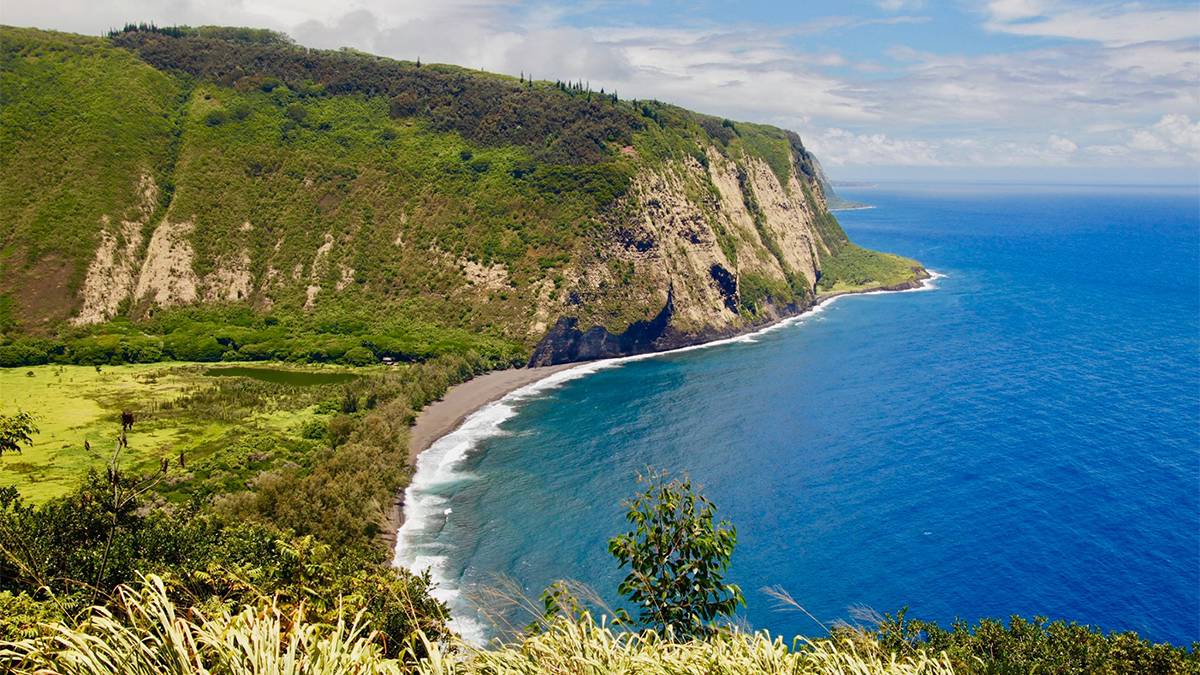
Keeping the Pace: Moderate-Level Hikes on the Big Island
Akaka Falls Loop Trail (Hilo)
Trail Head: Hawaii 96728
The Akaka Falls Loop Trail, located in Hilo, has earned a solid reputation among the best hikes on the Big Island. This 2.7-mile loop trail offers a close encounter with two of Hawaii’s most eye-catching waterfalls – the 442-foot Akaka Falls and the 300-foot Kahuna Falls.
Not only do these towering falls leave most visitors awestruck, but the trail takes you on a journey through a verdant rainforest filled with bamboo groves and various tropical plants. This creates an apparent atmosphere of being in an ancient tropical paradise.
This well-maintained trail is classified as moderately difficult. Hikers should note that the terrain is partly paved and part uneven path, with places where tree roots and loose rocks can trip the unwary. The trail also includes multiple stairs, both ascending and descending, adding to the physical exertion required especially for those not accustomed to them.
Another aspect to keep in mind is the slight elevation gain, approximately 442 feet throughout the 2.7-mile loop. This might not be a steep climb compared to the more challenging hikes near Kona, but the elevation difference can be felt, particularly on the return leg.
The Akaka Falls Loop Trail is still quite manageable for most people in reasonable physical condition. Remember, the idea isn’t to finish the trail in record time—take your time, absorb the beauty, and take breaks.
Several picturesque overlooks along the trail offer perfect spots for catching your breath and admiring the glorious views.
Related Post: Hawaii Waterfall – Discover the Hidden Beauty with 13 Best Cascades
Pololu Valley Trail (Kohala Coast)
Trail Head: Pololū Trail, Kapaau, HI 96755
The Pololu Valley Trail at Kohala Coast leads you behind a captivating black-sand beach. As you tread on, you discover that the path presents a combination of a noteworthy elevation change and a set of trail challenges.
The journey begins with a descent down to the valley floor via steep switchbacks. These zigzag paths, while helping to decrease the strain of a straight downhill path, can give your legs a fair bit of a workout.
The round-trip distance might just be around 3 miles, but it involves quite an elevation change of around 350 feet. This makes it challenging when you’re climbing back up from the beach on the return trip.
The trail’s terrain is a contrast of loose rocks, dirt, and occasional tree roots. You’ll find that paying attention to your steps and wearing solid shoes for a good grip can help you navigate through the unpredictable terrain of the trail.
Although the distance is relatively moderate, the combination of uneven terrain, descent, and switchbacks can add a challenging twist to your hike, making it seem less like a stroll and more like a strenuous workout.
As for the climate along the path, don’t expect a lot of shade on your trail. The switchbacks leading you down to the valley floor are particularly exposed, getting quite heated and tiring on sunny days. Packing some sunscreen and hydrating drinks is a crucial part of your hiking preparation.
Related Post: Nightlife in Maui – All the Best Things to Do in Maui at Night
Despite some of these challenges, taking on the Pololu Valley Trail comes with rewarding aspects. From breathtaking ocean views and lush valley scenery to the exotic black sand beach, the beauty of this path is an unparalleled delight.
However, this hike is best suited for people in decent physical condition who don’t mind a bit of exertion. So, pull on your hiking boots and get ready to discover one of the best Big Island hikes!
Papakōlea Green Sand Beach (South Point)
Trail Head: Green Sand Beach Road, Naalehu, HI 96772
This hidden gem located at South Point, Papakōlea Green Sand Beach offers a moderate-level hike that’s a must-do on your big island hikes list. The full round trip, approximately 5.5 miles, may be challenging to some due to its length and the uneven, often rocky terrain.
With loose volcanic rocks and ash scattered along the way, a sturdy pair of hiking shoes can be your best ally in conquering this trail.
Don’t underestimate the gradual elevation gain. Though not steeply inclined, you’ll find yourself ascending subtly throughout the hike. The climb is more noticeable on your way back, so conserve your energy smartly.
Sun exposure also makes this Big Island hike challenging. Shade along the trail is scarce, making sun protection gear crucial. Ensure you have enough hydration to keep the Hawaiian heat at bay and brace yourself for occasional wind gusts.
The journey concludes with a spectacular view of one of the big island’s famous green sand beaches, making every step worthwhile. Despite these moderate challenges, the Papakōlea Green Sand Beach hike has manageable aspects that maintain its appeal. Firstly, the trail doesn’t call for any technical climbing or scrambling, so long as you are comfortable with modest inclines and irregular terrain.
Related Post: The #1 Thing to Do in Kona, According to Locals
Also, for those finding the full hike a tad too daunting, the trail offers the option to explore partially, after which you can hitch a ride back up with the area’s occasionally available shuttle service.
Kilauea Iki Trail (Volcanoes National Park)
Trail Head: Pāhoa, HI 96778
Experience the breathtaking beauty of Hawaii’s volcanic landscape on the Kilauea Iki Trail. This 4-mile round trip hike in Volcanoes National Park offers explorers the opportunity to journey across a solidified lava lake, the result of Kilauea’s eruption in 1959.
The trailhead begins at the Kilauea Iki Overlook parking lot, leading along the northern rim of the crater amidst dense tropical rainforest.
Despite being well-marked, the trail demands a level of skill and preparation. It combines a series of unique terrains, starting with an accessible path that gradually progresses into a sharper, rock-strewn descent towards the crater’s floor.
Here, hikers step out onto an alien landscape of brittle, uneven hardened lava rock. Take special care in selecting sturdy footwear, as the demand for stable traction and ankle support rises considerably on this part of the hike.
The option to veer off towards the intriguing Thurston Lava Tube is a tempting prospect. The trail, however, should not be underestimated, as the ash-laden conditions can lead to loose, slippery footing, and the moderate 4-mile distance demands stamina. Combined with the challenge of an initial descent followed by an uphill climb, this trail feels like a good day’s workout.
Related Post: Things to Do in Kona Hawaii – 10 Mind-Blowing Activities
One of the unique aspects of Kilauea Iki Trail is the exposure to Hawaii’s elemental forces. Prolonged sun exposure on the barren crater floor can make the journey strenuous on hot days, so remember your sunscreen and stay hydrated.
Depending on the day and the whims of Kilauea, you might also witness the spectacle of volcanic ash clouds or vog, which can irritate the eyes and lungs. Checking air quality reports before your hike is advisable.
From the captivating desolation of Napau Crater to the panoramic vistas at the summit of the cinder cone on the Puu Huluhulu trail, the Kilauea Iki Trail is as challenging as it is rewarding. It’s no wonder it’s one of the best hikes on the Big Island.
Push Your Limits: Challenging Hikes on the Big Island for the Experienced
Mauna Kea Summit Trail (Hilo)
Trail Head: Saddle Road, Hwy. 200 Near the 28 Mile Marker
The Mauna Kea Summit Trail in Hilo is a unique challenge for experienced hikers wanting to push their limits. This 12-mile roundtrip trek into the heavens not only presents you with the chance to conquer one of the world’s tallest peaks but also rewards you with some of the most spectacular stargazing views on the planet.
But the real challenge of this hike isn’t just the distance—it’s the altitude. At a staggering 13,800 feet above sea level, Mauna Kea’s summit looms high into the subarctic climate zone.
The oxygen levels here are significantly lower than what most people are accustomed to, meaning there’s a high risk of altitude sickness. As such, spending time at lower altitudes on the Big Island to gradually adjust, commonly known as acclimatization, is obligatory.
Beyond the health risks, the trail itself presents its own set of hurdles. The path is steep, loose, and unpaved, demanding excellent physical fitness and balance for safe navigation.
Moreover, the weather conditions can fluctuate rapidly, with the brain-numbing cold, sudden snowfall, and high winds all being possibilities. And with the peak’s isolation and lack of water sources, even on day hikes you’ll be required to carry lots of provisions, which only adds to the weight you’re hauling up the mountain.
Finally, keep in mind that hiking the Mauna Kea Summit Trail typically requires a permit. In addition, reaching the trailhead usually requires a 4WD vehicle because of the steep and rugged road conditions. This hike is by no means a casual afternoon walk—it’s an adventure that requires serious preparation and determination.
Related Post: Hike Maui – 13 of the Best Trails to Explore
The Mauna Kea Summit Trail is ideal for seasoned hikers who covet a genuinely formidable mission. It’s not for the faint of heart or inexperienced. However, if you’ve got what it takes, the view from the top—gazing out at the cosmos framed by the Earth’s curve—is an unmatched reward well worth the toil.
Chain of Craters Road & Hilina Pali Trail (Volcanoes National Park)
Trail Head: National Park, 1 Crater Rim Drive, Volcano, HI 96785
The Chain of Craters Road and Hilina Pali Trail, located within the heart of the Volcanoes National Park, offer a captivating yet challenging hike for adventure enthusiasts. The route invites explorers to traverse directly across the hardened landscapes resulting from historic volcanic activity.
Each step along this unpaved road brings a sense of awe and respect for the raw power of nature, as it leads you across terrain shaped by cooling lava. This trek is not a casual stroll. The climactic 1.5-mile hike to the Hilina Pali lookout is a steep and rocky ascent, giving way to magnificent views of the active Kilauea caldera.
Experiencing this backdrop of elemental forces is an unforgettable journey, making the challenging terrain entirely worth the effort. However, be prepared to pack sturdy footwear that can withstand the rocky path.
Hiking this trail comes with few reprieves from the strong Hawaiian sun, and due to minimal shade along the trail, expect direct sun exposure for most of the route. Make sure to pack ample water and aim to schedule your hike during cooler periods of the day, when possible.
Related Post: 7 Reasons Why You Should Visit Volcanoes National Park
Volcanic activity in the region adds to the challenge and allure of the hike. Depending on current conditions, hikers may encounter volcanic ash or vog, a form of volcanic fog that can cause discomfort to the eyes and lungs.
For a safe journey, it’s highly recommended to check air quality reports before setting off on your hike. Despite being only 1.5 miles to reach the famous Hilina Pali lookout, don’t underestimate the full journey to the summit. The road leading to the foot of the hike is an adventure in itself, navigating an uneven lava rock path that can fatigue you even before the hike begins.
The Chain of Craters Road and Hilina Pali Trail will test your endurance, but the unforgettable panorama from the top is undoubtedly a triumphant reward.
Waipi’o Valley Hike (Hamakua Coast)
Trail Head: Honokaa, HI 96727
Embark on one of the best hikes on the Big Island, a 4-mile roundtrip journey into a valley imbued with cultural significance and nature’s beauty – the Waipi’o Valley hike on the Hamakua Coast. Not a trek for the unseasoned, this trail demands a certain level of respect for its historical traces and environmental treasures, not to mention its challenging terrain.
What makes this hike one of the best Big Island hikes, particularly for those seeking a meaningful challenge, is the extreme steepness characteristic of the Waipi’o Valley Road.
Related Post: Hanauma Bay Hawaii – Top Oahu Snorkel Spot
With an average grade of 25%, this is a descent into nature that will put your knees and leg muscles to the test, as much as your cardiovascular athleticism on the ascent. And yet, the spectacular views of waterfalls and black sand beaches on the valley floor prompt many to take the plunge.
However, the challenge doesn’t end there. The road, predominantly composed of uneven dirt and gravel, often meets hikers with muddy or slippery conditions.
Particularly after rain, every step demands careful thought and sturdy footwear. In some sections, the road narrows down, flanked by sheer drop-offs – a wrong step could have severe consequences.
If traversing demanding terrain was not enough of a challenge, the Waipi’o Valley hike also presents a significant elevation gain, flash flood risks, and the added complexity of river crossings.
With potential round-trip distances and dangers associated with sudden flooding, your careful planning and responsiveness to unexpected hurdles will be tested during this Big Island hike.
Finally, hikers must navigate additional considerations such as the necessity of a 4WD vehicle to access the trailhead due to the steep and rough road leading to it.
If these conditions sound exciting rather than daunting, you’re ready to embark on the Waipi’o Valley hike – one of the most rewarding and best Big Island hiking trails available for the experience.
Kalalau Trail (Na Pali Coast)
Trail Head: HI-560, Kapaʻa, HI 96746
If you’re looking for one of the most challenging hikes on the Big Island, the Kalalau Trail along the Na Pali Coast is a strong contender. This 11-mile one-way trail presents rugged terrain, breathtaking vistas, and a sense of real adventure.
Related Post: Luaus in Hawaii – 11 Top Luaus for An Unforgettable Evening
A narrow path that winds its way along steep cliffs, demands both balance and focus given its rocky and uneven ground. But the exertion pays off beautifully with views one can only dream of.
The trail itself takes you on a wild journey through nature. Hikers must be prepared for instances of scrambling up and down uneven and rocky terrains. Moreover, unexpected rain could lead to sudden stream crossings, requiring bravery and nimble footwork.
This hike is for those who prefer a dose of solitude, as the trail is remote and cell service is minimal. Self-reliance, determination, and emergency preparedness are must-haves for this journey.
The added challenge is that the start/end point of the trail can only be reached by boat, which introduces another element of adventure into the mix.
Weather in this area can be unpredictable, potentially leading to sudden flash floods that can cut off portions of the trail or make river crossings risky. Rain may turn sections into slippery mudslides, requiring extreme caution.
The trail requires an intense physical workout, as you navigate a 22-mile round-trip with significant elevation changes. The added weight of camping gear for an overnighting experience adds to the challenge as does the requirement of permits, which may be difficult to procure due to high demand.
Overall, the Kalalau Trail is a feat for experienced hikers, offering a testing yet rewarding experience. It’s touted as one of America’s most beautiful and challenging hikes – a badge of honor for those who have completed it. But remember, thorough preparation and extensive hiking experience are obligatory prerequisites.
Tips From An Expert: Know Before You Hike Big Island Trails
Before setting out on your journey, make sure you are well-prepared with these valuable tips:
- Respect the Ahupuaʻa: Learn about the traditional Hawaiian land division system. Many trails cross boundaries, so be aware of potential access issues and respect any local signage or practices.
- Volcano Culturally Sacred: Removing ANY rocks, even small ones, from areas like Hawaiʻi Volcanoes National Park is disrespectful to native Hawaiian culture and beliefs. If uncertain, don’t take it.
- Microclimates are King: Hiking Big Island Hawaii means facing drastic variations in climate within short distances. Research the zone you’re hiking IN DETAIL (not just the general island forecast). The island’s diverse microclimates can expose you to sun, rain, and wind all in one hike. Waterproof gear is essential, and layers are your best friend. A lightweight, breathable rain jacket and a warm layer should always be in your pack, no matter how clear the sky looks when you start.
- Acclimatize to Altitude: The altitude on some Big Island hikes, especially those around Mauna Kea and Mauna Loa, can affect even the most experienced hikers. Spend a day or two acclimatizing to the elevation, particularly if you plan to summit Mauna Kea or tackle high-altitude trails.
- Flash Floods and Streams: Whether you’re hiking in Kona Hawaii or in Hilo, be hyper-aware of rainfall, even if distant. Canyons or gulches can flood without warning, turning a hike into a dangerous situation. Check streamflow forecasts before heading into these types of regions.
Related Post: Cheapest Places to Stay in Hawaii – A First-Time Visitor’s Guide
- Wind – Not Just a Breeze: Gusts on exposed ridges or near the coast can be surprisingly strong, affecting balance and heat loss. Plan layering options accordingly.
- Volcanic Terrain Gear: The lava fields can be sharp and unforgiving. Durable, high-ankle hiking boots are recommended to protect against sharp rocks and provide stability. Consider carrying gaiters to keep small rocks out of your boots on loose volcanic terrain.
- Critters with a Bite: While not a huge concern, centipedes and some spiders can deliver a painful sting. Be cautious when turning over rocks or logs.
- Water, But Better: Electrolyte tablets or powders can be lifesavers on hot hikes. Preventing dehydration is more efficient than fighting it.
Big Island Hikes FAQs
Is Mauna Kea and Mauna Loa the Same?
No, Mauna Kea and Mauna Loa are not the same. They are two distinct volcanoes located on Hawaii's Big Island, each with its unique hiking trails, terrain, and ecosystem.
How Much Time Do I Need at Volcano National Park?
Spending one full day at the Hawaii Volcanoes National Park is typically sufficient for most visitors. However, if you're planning to tackle more extensive trails such as the Napau Trail, or to uniquely explore, like veering off to the Thurston Lava Tube, you may want to consider spending two days there.
Hawaii Hikes Big Island: Ready for a Big Island Adventure?
Ready to conquer the best big island hikes? Transform your dreams into reality and embark on an unforgettable journey with Tripster’s Big Island Vacation package.
This all-inclusive bundle combines your accommodation, transportation, and Big Island hiking tours, tailored to suit every type of hiker. Whether you’re gazing at the majestic Akaka Falls or hiking to the summit of Mauna Loa, we’ve got you covered.
Lace-up those hiking boots, pack your excitement, and let us guide you through the wonders of the Big Island hiking trails!
PS: These are affiliate products, so if you choose to buy, Tripster might earn a commission.
